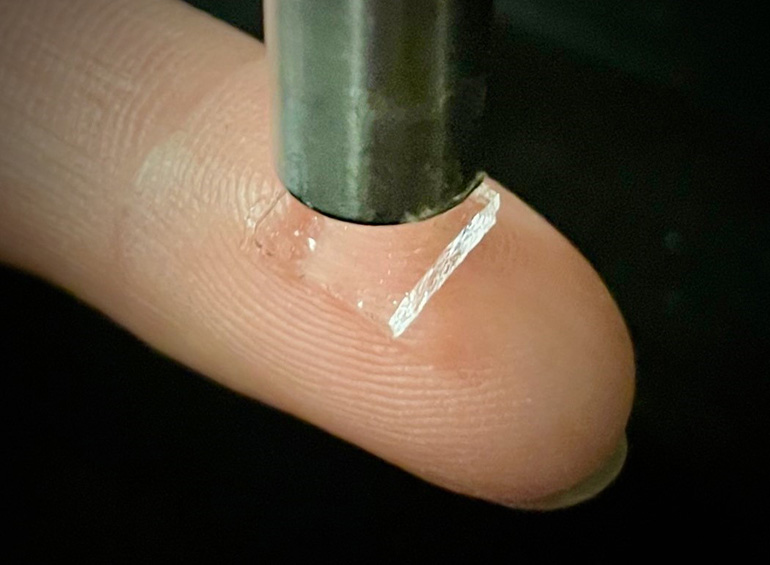Scientists from McGill University in Canada created a technique of using ultrasound-mediated cavitation to make bioadhesives better stick to body’s tissues, including wet surfaces that are typically challenging for such materials.
The new method involves ultrasound to create microbubbles within the adhesive. The bubbles burst, which then temporarily forces some of the adhesive components deeper into the underlying tissue, helping to create a stronger bond.

The hydrogel adhesives are made using poly(N-isopropylacrylamide) or polyacrylamide combined with alginate, and also contain chitosan or gelatin nanoparticles or cellulose nanocrystals. So far, the Canadian team has shown that the technique works with living skin in rats.
Getting bandages to stick to wet and slippery surfaces on the body is a challenge, as is sticking wet tissues together. Medical adhesives have a hard job, with the need to form a tough bond in a wet and dynamic environment without relying on toxic components. Such adhesives also either need to break down into harmless byproducts or be easily detachable and removable, without causing localized tissue damage.

These demands have led researchers to investigate natural materials, such as alginate or chitosan, as components of bioadhesives. However, using sound waves to enhance the stickiness of bioadhesives is a new approach, and is one that has been pioneered by these researchers at McGill University.
“Bandages, glues, and stickers are common bioadhesives that are used at home or in clinics,” said Jianyu Li, one of the developers of the new technique. “However, they don’t usually adhere well on wet skin. It’s also challenging to control where they are applied and the strength and duration of the adhesion formed.” “We were surprised to find that by simply playing around with ultrasonic intensity, we can control very precisely the stickiness of adhesive bandages on many tissues,” added Zhenwei Ma, another researcher involved in the study.
So far, the researchers have shown that their adhesive technology works on rat and pig skin, and the ultrasound method significantly increased the adhesion energy of the applied adhesive. The researchers could also detach the adhesive on demand.
“The ultrasound induces many microbubbles, which transiently push the adhesives into the skin for stronger bioadhesion,” said Outi Supponen, another researcher involved in the study. “We can even use theoretical modeling to estimate exactly where the adhesion will happen.”
Studies in Science: Controlled tough bioadhesion mediated by ultrasound
Via: McGill University
